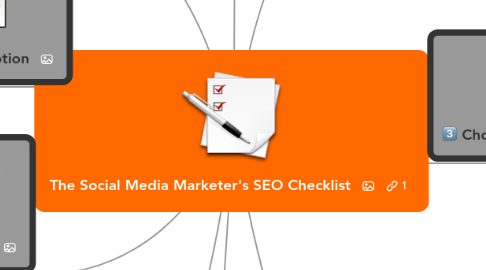
1. Canonicalize
1.1. Important to keep in mind for social sharing
1.2. Example:
1.2.1. http://www.seomoz.org/seo-industry-survey
1.2.2. vs.
1.2.3. http://www.seomoz.org/seo-industry-survey?utm_source=social&utm_medium=twitter&utm_campaign=industry-survey
1.3. Use Rel=Canonical Tag
1.3.1. thus:
1.3.1.1. http://www.seomoz.org/seo-industry-survey?utm_source=social&utm_medium=twitter&utm_campaign=industry-survey
1.3.1.2. appears as:
1.3.1.3. <link rel="canonical" href="http://www.seomoz.org/seo-industry-survey"/>
1.4. Additional Reading:
1.4.1. 301 Redirect or Rel=Canonical - Which One Should You Use? from Paddy Moogan
1.4.2. Canonical URL Tag - The Most Important Advancement in SEO Practices Since Sitemaps from Rand Fishkin
1.4.3. Complete Guide to Rel Canonical - How To and Why (Not) from Lindsay Wassell
1.4.4. Canonicalization
2. Page Load Time
2.1. If and When your social media messages pick up steam, can your servers handle the load?
2.2. Optimize that infographic!!!
2.3. Cut the superfluous javascript code
2.4. Remember...Google does rank (albeit minor...for now) according to speed.
3. Title Tag
3.1. Here's where those keywords come into play
3.2. Remember:
3.2.1. Put keywords as close to the beginning of your title as possible
3.3. Additional Reading:
3.3.1. Title Tag Best Practices
3.3.2. Do Keywords in Post Titles Really Matter? from Brian Clark
4. Meta Description
4.1. This text isn't going to help with page rankings, however...
4.2. Meta Description text is most often the source of that "Auto Text" that shows up across various social sites. I.e. Facebook
4.2.1. When links are added to a wall, Facebook automatically pulls the title tag, meta description, and a series of selectable images
4.2.2. Put this text to good use!
4.2.3. Entice users to click on the link whether they're searching on Google, OR checking out a shared link.
4.3. Additional Reading:
4.3.1. Meta Description Best Practices
5. Measure and Improve
5.1. Read: Calculating and Improving Your Twitter Click-through-Rate from Rand Fishkin
6. Keyword Research
6.1. Google Adwords Keywords Tool
6.1.1. Will give you an estimated monthly traffic number
6.1.2. You'll also want to select keywords based on their difficulty for your site to rank for them.
6.1.3. Keywords come into play with Twitter and Facebook updates
6.1.4. Additional reading:
6.1.4.1. The Beginner's Guide to SEO - Chapter 5: Keyword Research from Rand Fishkin
6.1.4.2. Choosing the Right Keyphrases from Sam Crocker
6.1.4.3. Categorized Keyword Research: Step 2 of the 8-Step SEO Research Strategy from Laura Lippay
7. Social Segments for Tracking
7.1. Segment Social Traffic in Google Analytics
7.1.1. Create a Custom Segment
7.1.2. Add Social Sources
7.1.3. Test and Name
7.1.4. Filter Traffic by "Social Media"
8. Choosing a URL shortner
8.1. Optimal: a shortener that provides a 301 redirect
8.2. One that provides analytics
8.2.1. bit.ly
8.3. Use a personalized shortener
8.3.1. via bit.ly pro service
8.3.2. Analytics:
8.3.2.1. How many clicks per URL
8.3.2.2. Geolocation
8.3.2.3. Time clicks occur
8.4. Additional Reading:
8.4.1. URL Shorteners: Which Shortening Service Should You Use? from Danny Sullivan
9. Easily Linkable Content
9.1. Add Twitter/Facebook/StumbleUpon sharing buttons
9.2. Example:
9.2.1. OkCupid.com's blog
9.2.2. Upon reaching the end of an article users are presented with:
9.2.2.1. Sharing buttons
9.2.2.2. and
9.2.2.3. an easy copy/paste/share link
